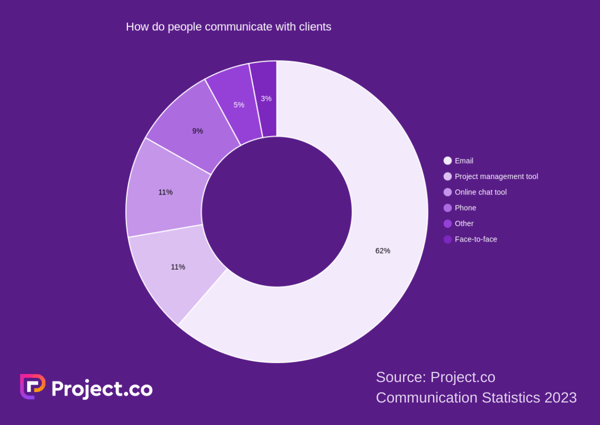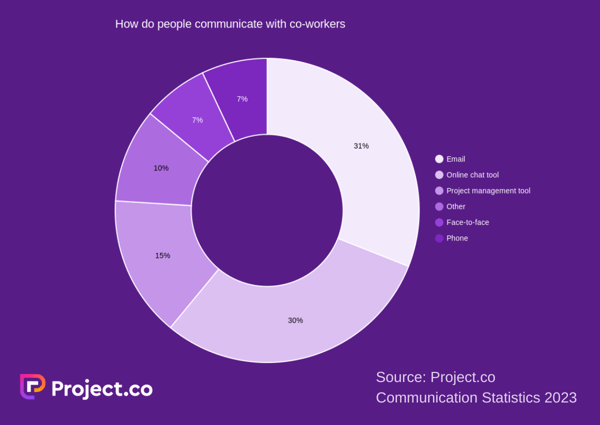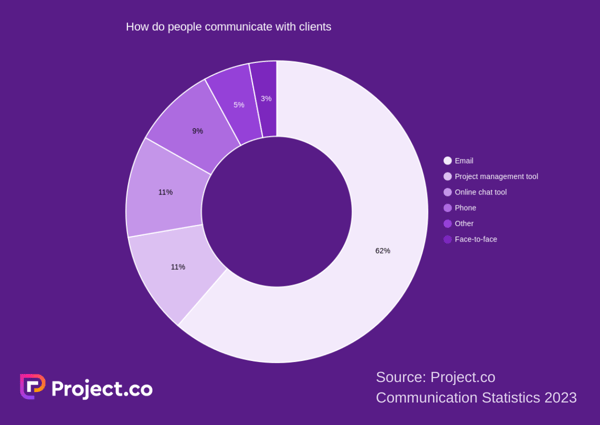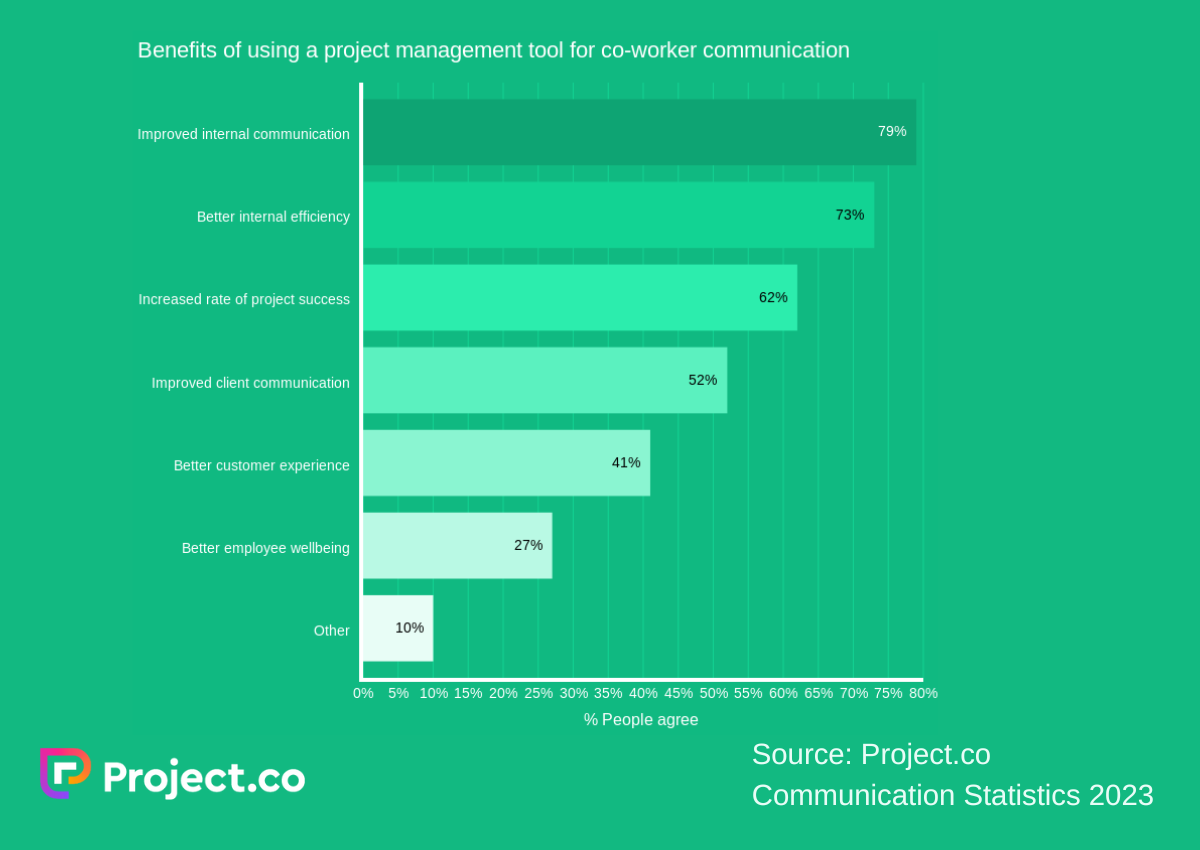Whatever your niche or industry, there’s no debate: Effective communication —both internal and external — is critical to your company’s success. With more technology available than ever before, you’d think it would be easy to master.
But new data published by Project.co reveals that businesses in 2023 are still struggling to effectively communicate — with serious implications for the customer experience.
In this article, we’ll dive into the data.
Current State of Business Communication
While 99% of consumers say it’s important that a business communicates well with them as a customer, a mere 7% of businesses rate their communication as “excellent.”

More than double this number rate themselves as “below average” or “poor.”
And the impact on the customer experience is clear: More than two-thirds of people say poor communication has led them to stop dealing with a company and jump ship to a competitor.

Brands know they need to do better – and customers demand that they do better. But when it comes to brands actually doing better – it seems that’s far easier said than done.
So what’s going on?
What does great communication look like?
Perhaps the best place to start here is to look through the lens of the customer.
What is it that they want from companies? What does great communication actually look like?
For a start, customers want to be informed. In fact, 94% of customers surveyed say it’s important they know (or can find out) updates related to their purchase or project, such as its status and the next deliverable.
Customers also want companies to note and remember details so they don’t have to repeat themselves. 87% of people say they’ve had to repeat themselves to the businesses they buy from, and 79% find this annoying.
Full, thorough communication makes a big difference. We all know, from our own experiences as customers, that errors and delays can often be forgiven as long as they’re clearly communicated and explained.
Beyond this, there’s been plenty of research around response speed, particularly how quickly companies are able to go back to messages and what customers expect.
A SuperOffice study showed that nearly half of all customers (46%) expect companies to respond to their messages in less than four hours.
Yet, the average response time, based on a sample size of 1,000 companies, was more than three times this – and the slowest response time was eight days.

In essence, it seems that great communication boils down to:
- Visibility: A thorough overview of where things are up to.
- Organization: Information stored and distributed in an organized way, available to be called upon when needed, with no need for customer follow-up.
- Attitude: Conscientious, thorough, and honest messaging.
- Efficiency: Fast and timely responses.
The Impact of Poor Communication
Communication sound simple, but the price of not delivering on it is steep.
When businesses were asked how communication issues had affected their business, here’s what they said:
- 68% said they’d wasted time.
- 53% had missed messages.
- 42% had experienced burnout, stress, or fatigue.
- 35% had lost files.
- 30% felt the customer experience had directly suffered.
- 12% had lost customers to competitors.
- 10% said they’d lost employees.
Clearly, that’s a broad spectrum of crucial metrics hampered by an inability to get communication right.
So why are brands getting it wrong?
If the core pillars of effective communication – visibility, organization, attitude, and efficiency – are so simple and there are more tools available than ever before to help, then why are so many companies still in such a mess?
The truth is, companies just haven’t found a way to adapt. The data suggests that they’re using technology – but often flawed technology with no central source of truth.
It suggests a particular over-reliance on email. When asked how they primarily communicate with their co-workers, 31% of people said email — the most commonly cited answer.

For client communication, it’s even more dominant, being used by nearly two-thirds of businesses and dominating over every other channel.
Email has plenty of benefits, of course. It’s fast, easy, and simple. But when it comes to collaborating and trying to create in-sync teams, it can often make things more confusing and decrease opportunities for spontaneous brainstorming.

Communication inevitably becomes siloed, happening in private inboxes away from the rest of your team and beyond the view of management — which sometimes results in crossed wires, confusion, lost files, and wasted time.
What did Person A promise the client three weeks ago? What was that crucial note the client told Person B by email before the project got started? Where did Person C put the brand guidelines the client emailed over?
Information isn’t shared effectively – and that’s where problems begin.
And what about the impact on work-life balance?
With increasing access to work emails outside the office, there’s a pervasive sense for many that the work never really ends. For many, the temptation — or worse, requirement — to check email off-hours is eating into family and leisure time, resulting in stress and anxiety.
According to Teamstage, 40% of employees use their devices for work outside office hours, to do over a quarter of their work. This lack of division between work and leisure time can only hinder productivity, not to mention health and well-being.
Client and Customer Communication: Two Sides of the Same Coin
While we tend to treat client communication and internal team communication as entirely separate things, the reality is that they’re inextricably linked. Poor internal communication directly affects customer communication.
When team members don’t have the information they need, it’s impossible for them to share it with customers – leaving the customer uninformed and unhappy.
Poor organization, missed messages and lost files create additional work for team members – which creates unnecessary, avoidable delays for the customer.
When teams communicate poorly internally, they often spend huge amounts of time fixing problems, correcting mistakes, and looking for information.
And it all means a less efficient team, and less time to focus on the customer experience. In the end, no amount of relationship-building can make up for not delivering the basics.
The Changing World of Work
On the surface, it seems that many of these issues are exacerbated by the rise of remote work.
Business leaders and pundits have been quick to question the impact of working remotely on a business’s ability to communicate effectively.
Although hybrid working has established itself to some extent, 44% of people surveyed by Project.co are still working fully remotely, with less than one in five back in the office full-time.
The thing is, office-based working was never a solution for communication, and it still isn’t.
Project.co found that, when people use a project management tool to communicate with clients, customers, or both, they were significantly more effective.

What’s more, using a project management tool to communicate with clients is strongly associated with:
- Better internal efficiency
- Better customer experience
- Increased rate of project success
- Better employee wellbeing

Using a project management tool for co-worker communication has a similar range of benefits with an even stronger correlation.
Across every data point, people find it easier to communicate effectively, measure project progress, and keep information organized and accessible when they use an online tool.

Click here to see all the data from the Project.co Communication Statistics 2023 survey.
Wrapping up
So, there’s good news and bad news.
The bad news is businesses have a lot of work to do. The numbers suggest they’re aware of this, but perhaps too overwhelmed by the task to take meaningful action.
These problems won’t simply resolve themselves, however, without positive action from managers and strong buy-in from teams.
It takes strong, decisive leadership to identify the need for change, explore to find the right systems, tools, and software, and then drive change throughout the organization.
But the good news — as this data shows — is that taking this action is the start of a road that leads to satisfied customers, reduced customer and employee churn, and a happier, healthier team.
Is it a challenge? Of course. But it’s one well worth facing down.
![]()

![Download Now: The Ultimate Guide to Business Communication [Free Guide]](https://i4lead.com/wp-content/uploads/2023/03/a7ff318c-b341-4687-b4d8-4b4c98745451.png)
